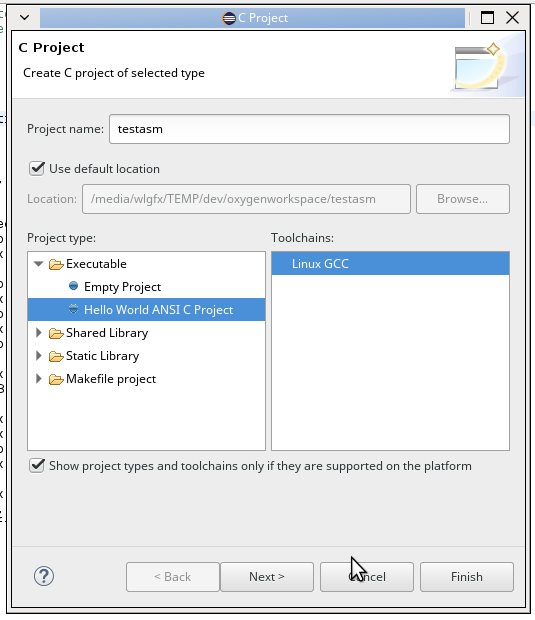
- INSTALL ECLIPSE OXYGEN ON MAC FOR C++ .DLL
- INSTALL ECLIPSE OXYGEN ON MAC FOR C++ INSTALL
- INSTALL ECLIPSE OXYGEN ON MAC FOR C++ 64 BIT
- INSTALL ECLIPSE OXYGEN ON MAC FOR C++ UPDATE
To specify the language level, go to Project->Properties->C/C++ Build->Settings->GCC C++ Compiler->Dialect and choose the appropriate language level, like -std=c++0x Optional: 32-bit toolchain Project->Properties->C/C++ Build->Settings->g++ compiler->Includes # Add this include path to resolve standard C++ library referencesĬ:\msys64\usr\include Optional: Specify C++ Standards Level Have it include the header file for the standardb C++ library in MinGW, by adding the following include path: To fix the unresolved references, Eclipse needs to know where to look for the header file. Note the path var may already be set if you manually updated your path earlier to add the bin directoriess.Īt this point you should be able to compile your program, but the code editor will tell you it can't resolve the standard library symbols like std::cout. Project->Properties->C/C++ Build->Environment: # Set these environment variables in the C/C++ Build options It might try to auto detect some of these, but you want to at a minimum make sure your PATH variable includes the directories with make and g++. Configure environment variablesįirst set up your environment variables so Eclipse knows where to look for things. When choosing a project, choose MinGW as the compiler. It is a very mature IDE, has a good debugger, is heavily customizable and supports many other languages if you choose to commit to it and use it for other languages. Since we are using the free GNU toolchain that is available on several platforms, I recommend using an IDE that is also cross-platform, so you can use the same IDE+compiler across Windows, Mac, and Linux. There are many options including NetBeans, Qt Creator, CodeBocks, CLion, Visual Studio Code, Sublime Text, Atom, vim, emacs, etc. Since you already have the compiler toolchain installed and available, you can compile C/C++ project and get coding, but you will likely want to set up an IDE to make things easier.

INSTALL ECLIPSE OXYGEN ON MAC FOR C++ .DLL
dll files are also in the bin directories If you want to access everything from your Windows Command Prompt, including vim, pacman, g++, make, and everything else, then add these to your PATH: #. Pacman -S mingw-w64-x86_64-toolchain Optional: Add MSYS2 executables to your Windows PATH
INSTALL ECLIPSE OXYGEN ON MAC FOR C++ INSTALL
# Install the compiler(gcc), debugger (gdb), and more # Install tools like make, autoconf, and more Then install the base development tools like make and autoconf with the base-devel package and
INSTALL ECLIPSE OXYGEN ON MAC FOR C++ UPDATE
Simply download the installer and then use the "MSYS2 MSYS" icon that it creates in the start menu, or run it manually from C:\msys64\msys2.exe.Īfter getting in to the MSYS2 bash shell, update everything with: pacman -Syu MSYS2 comes with the pacman package manager, the same one Arch Linux uses. You could use the older MinGW+MSYS tools, but I recommend using MSYS2, which is all I will covere here. To get this on Windows we want a minimal system (MSYS) with minimalist GNU for Windows (MinGW) setup.


INSTALL ECLIPSE OXYGEN ON MAC FOR C++ 64 BIT
This guide focuses on the 64 bit version only. This will outline the process for getting a simple C++ toolchain ready in Windows using Eclipse as an IDE.

In Windows, you can simply install Visual Studio and use the Microsoft C++ compiler, but you may want to use the free GNU compiler (g++) instead. Trying to get an open source toolchain configured in Windows for C++ can sometimes be a headache. I was barely able to hack it together myself and there are still a few details I am not 100% clear on.įor more details about installing MSYS2 check out Install gcc compiler on Windows with MSYS2 for C/C++. DISCLAIMER: Don't hold me accountable for any bad advice or incorrect information provided here.


 0 kommentar(er)
0 kommentar(er)
